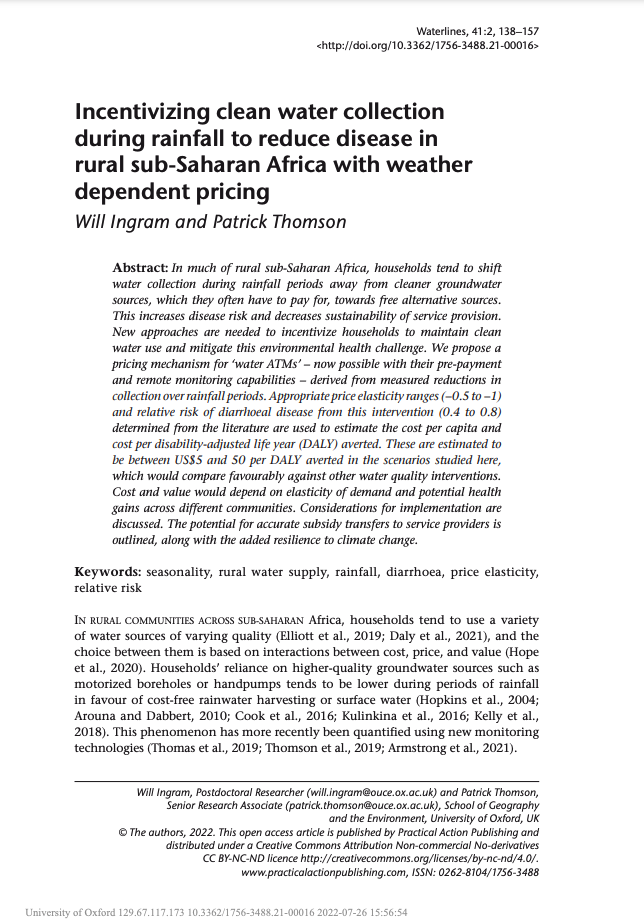Authors: Will Ingram & Patrick Thomson
In much of rural sub-Saharan Africa, households tend to shift water collection during rainfall periods away from cleaner groundwater sources, which they often have to pay for, towards free alternative sources. This increases disease risk and decreases sustainability of service provision. New approaches are needed to incentivize households to maintain clean water use and mitigate this environmental health challenge. We propose a pricing mechanism for ‘water ATMs’ – now possible with their pre-payment and remote monitoring capabilities – derived from measured reductions in collection over rainfall periods. Appropriate price elasticity ranges (−0.5 to −1) and relative risk of diarrhoeal disease from this intervention (0.4 to 0.8) determined from the literature are used to estimate the cost per capita and cost per disability-adjusted life year (DALY) averted. These are estimated to be between US$5 and 50 per DALY averted in the scenarios studied here, which would compare favourably against other water quality interventions. Cost and value would depend on elasticity of demand and potential health gains across different communities. Considerations for implementation are discussed. The potential for accurate subsidy transfers to service providers is outlined, along with the added resilience to climate change.

